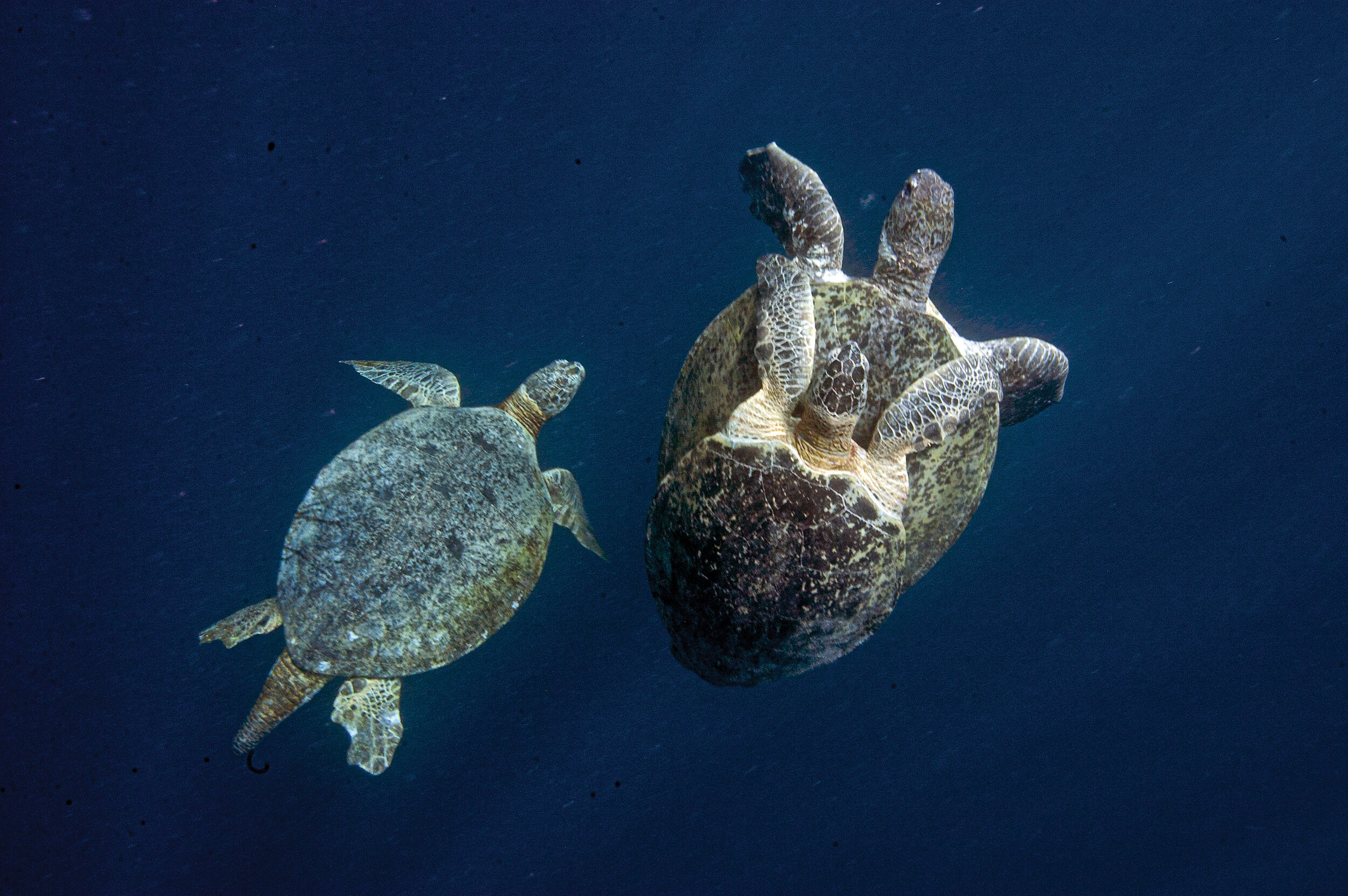How to Tell if a Sea Turtle is Male or Female
By ITZEL SIFUENTES-ROMERO and JEANETTE WYNEKEN
How can we tell if a sea turtle is female or male? In adults, it’s relatively easy—a male has a long tail that extends well beyond the carapace, with a cloacal opening near the tip. In comparison, a female has a short tail with a cloacal opening near the base. With hatchling and sub-adult turtles, it’s not possible to determine their sex simply by looking at them; they are not sexually dimorphic, meaning that they do not have any external features to distinguish males from females. They lack such features because the hormones that are responsible for changing the anatomy are not present in high enough amounts to trigger those differences until they reach sexual maturity—and that can take decades!
One way to determine sex in adult sea turtles is to look at their tails. Males’ are long and extend past their carapace, as visible on the lone turtle (left) in this photo, whereas females’ are much shorter. © Nicolas J. Pilcher
Sexual identification of young sea turtles is further complicated by the fact that, unlike mammals, they don’t have sex chromosomes (no X or Y); therefore they lack sex-specific genes that could be used to determine sex with a DNA sample. In mammals, for example, the sry gene is only on the Y chromosome, and its presence or absence can be used to determine sex. In contrast, sea turtles’ sex is determined by the incubation temperature they experience as embryos—warmer incubation temperatures produce females, and cooler temperatures produce males. But, if not through sex chromosomes, how does that system work? We have found that temperature is able to trigger a gender-specific cascade of genes that directs the embryo to differentiate the reproductive tract and gonads (ovaries or testes) and instruct the formation of ducts that will carry eggs or sperm later in life.
Though small, these gender-specific differences in turtles’ reproductive tracts can be seen by looking inside young, posthatchling turtles (120 grams, about 82–97 centimeter straight carapace length, depending on species) using a procedure called laparoscopy. In female posthatchling turtles, a laparoscope allows us to see a white ovary and a big, mobile, immature oviduct (called the Müllerian duct) with a very well-defined lumen. If the young turtle is a male, then we see cream-colored gonads, usually with a network of very small blood vessels. Male turtles also lack a complete Müllerian duct; it may be entirely absent or simply incomplete.
Unfortunately, hatchling turtles are too small for a laparoscope. So how can we tell if a hatchling is male or female? The answer relies on the sex-specific proteins that are induced by the incubation temperature. The majority of those proteins are produced in the gonads. We discovered that one protein, known as anti-Müllerian hormone, is released into the blood stream only in males. That hormone, therefore, makes it possible to identify the sex of hatchlings by analyzing a small blood sample. Currently, we know that this test works for loggerhead hatchlings, and we are beginning to test it on other sea turtle species as well. Our next goal is to develop this assay into a field kit, so that measuring the primary sex ratio of any species can be done in the field and not just in the lab. This next step would be a huge breakthrough for sea turtle conservation research, because sex ratio is a fundamental piece of demographic information that will allow us to help plan future management strategies in the face of climate change.
This article originally appeared in SWOT Report, vol. 15 (2020). Click here to download the complete article as a PDF.

